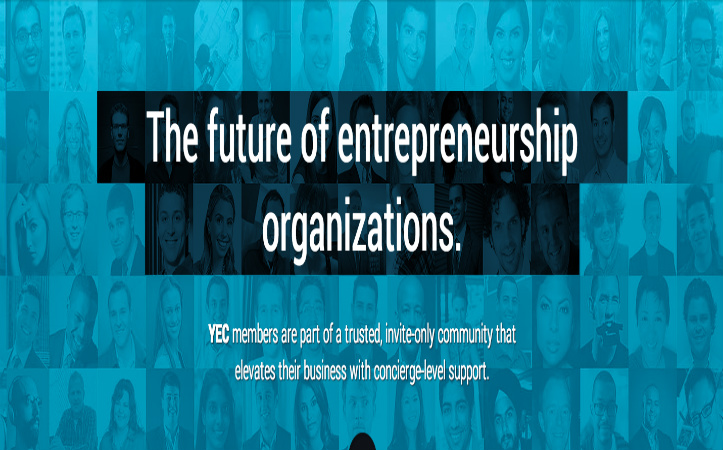This article contributed by Ryan Vaughn
It doesn’t matter if you’re a fan of the Bulldogs, the Eagles, or the Spartans — you need to know what happened at Friday night’s big game. So you go to the high school’s official website but discover it hasn’t been updated since last year!
How does this happen? Professional and collegiate sports teams always have up-to-date information on their sites. Why don’t high schools? The simple answer is that a high school athletic department has a lot of things to focus on, and maintaining a website isn’t high on the priority list. This is the pain point that Varsity News Network discovered and solved, enabling us to build the largest and fastest growing company in high school athletic websites.
High school athletic departments can create websites in dozens of ways, and many solutions are free. But no other web platform comes complete with technology that automates updates and makes maintaining a website painless. By ensuring every school’s athletic platform is always updated, Varsity News Network changes the game for high school athletic departments across the country.
Here’s the catch: It can be a challenge to convince organizations that are slow to adopt technology that they need a game-changing product. But that’s no reason to shy away from selling tech to an industry that traditionally is not friendly to tech.
The Challenge of Selling Tech
While decision makers in many industries look to the latest technology for a competitive edge, organizations in sectors with deeply established processes and layers bureaucracy often make decisions under a different framework: risk avoidance.
If you have a disruptive product, then people should be lining up, right? Maybe not. If a customer buys your product and introduces sweeping changes that don’t work out, she could be on the chopping block. If you don’t position your solution correctly, your customers might feel threatened and anxious instead of recognizing the benefits they could reap.
Organizations in laggard industries try to mitigate risk at every turn and look for solutions that have zero possibility of making them look bad. This dynamic presents challenges for disruptive technology. The market doesn’t want change; it wants a faster or more powerful version of what it already has.
Even so, resist the temptation to build a faster horse. Non-tech markets can be a perfect place for disruptive technology as long as you position your product correctly. Here are five ways to improve your chances of success
Know Your Market Inside and Out
It’s easy to think that other organizations use the same tools that you do, but things you take for granted might be foreign to your customers. For example, many athletic departments don’t use Dropbox, Google Docs, or other productivity tools that technology nerds access every day.
By immersing yourself in the life of your target customer, you can find opportunities to deliver value that your competitors won’t spot. Learn what technology your potential customers are currently using, what technology they should be using (that you could bring to them), and also find out which tools they’ve decided are too risky. Use your findings to inform your product development process.
Make Your Product Recognizable
If your customers don’t understand your product, they’ll never buy it. So even if your product is 100 percent original, it’s important to frame it so customers can classify it within their existing problem-solving frameworks. Author and entrepreneur Seth Godin would call this familiar, innovative product a purple cow.
Avoid totally new products if possible. The best products are those that function just like a product the market already loves but with one vastly improved characteristic. In that case, people know what it is and understand how it’s better than what they’re already using. If your product is unique, be sure to frame it within the context of existing technology when pitching it.
Solve a Pain Point
Your biggest obstacle in a laggard industry is the fixed mindset exemplified by phrases such as “We’ve always done things this way.” To break through this barrier, you need to solve a problem, not simply provide a luxury.
People generally are willing to work much harder to solve their problems than they are to increase their satisfaction. Compel your customers to demand your product by making sure that your solution solves a key pain point.
At Varsity News Network, we realized early on that website platforms were seen as tools that were nice to have but that required too much upkeep. So we switched focus away from the platform itself, and we organized our efforts around creating tools that solved the upkeep problem, and that turned out to be key to our growth.
Gather Social Proof
No one wants to be the guinea pig, especially in a risk-averse organization. But nobody wants to be left behind either. So show your target customer how all her friends are already using your solution.
Build the simplest version of your product, and target it toward the early adopters in the market. Once the early adopters love your product, give them the tools and incentives to show their friends how amazingly smart they are to use your software. Their friends will feel left out if they don’t join the club.
Remove All Risk
Risk kills deals, especially in larger organizations where the impact of a failed initiative sticks with the employee who commissioned it. It doesn’t matter how big the potential payoff; if there’s even a hint of possible failure, your sales pitch will likely fail. Build your product and construct your pitch accordingly.
Many industries are comfortable sitting safely on the sidelines of the technological revolution, and that’s great news for people who can speak their language. These industries can provide massive opportunity as long as you’ve created something simple, recognizable, and free of risk. Solve a problem and explain your solution simply, and you’ll be able to make a world of difference in even the most tech-resistant markets.
 Ryan Vaughn is the co-founder of Varsity News Network, the largest and fastest growing network for school sports. VNN’s product facilitates the digital communication of more than 5 percent of U.S. high schools after only three years in the marketplace.
Ryan Vaughn is the co-founder of Varsity News Network, the largest and fastest growing network for school sports. VNN’s product facilitates the digital communication of more than 5 percent of U.S. high schools after only three years in the marketplace.










